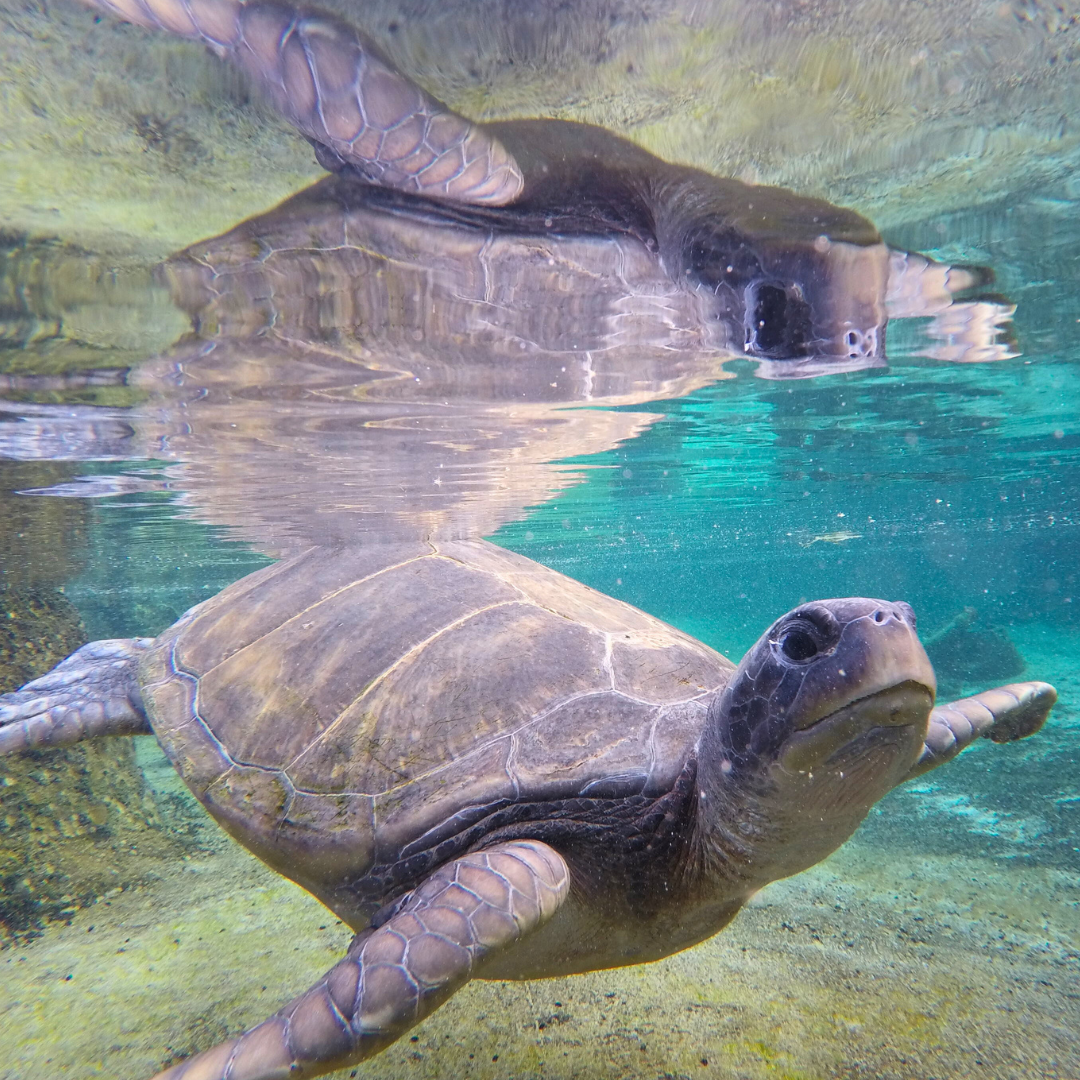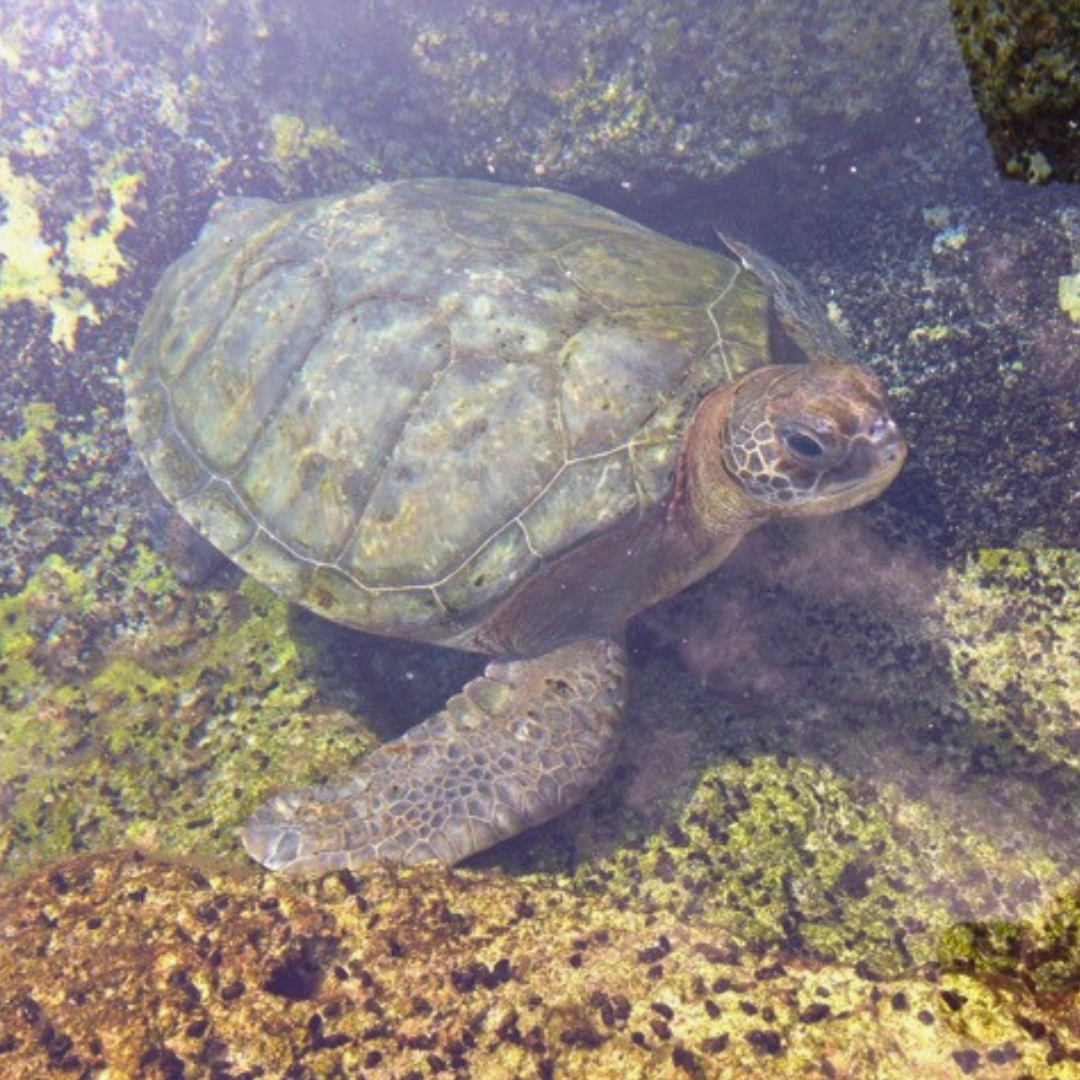As advocates for sea turtle protections, we work tirelessly to raise awareness about the threats facing these majestic creatures and promote conservation initiatives to safeguard their habitats. Additionally, our facility serves as a forever home for sea turtles deemed unfit for release due to injuries or other factors. Through our educational programs, we strive to ensure a brighter future for sea turtles and inspire others to join us in our mission of marine conservation.

Turtwig (Turt)
Turt is a female adult green sea turtle. Turt was first found floating in the intake canal of the nuclear power plant in Fort Pierce in 2009. Unfortunately, that wasn't the first time help was needed. Turt was found with an internal pit tag that told a story of at least four other occurrences when humans had to step in to provide aid. Concerned by the number of times the turtle had been scanned, the rescuers transported this frequent flyer to Loggerhead Marinelife Turtle Hospital in Juno Beach for medical insight.
After undergoing a series of tests at the hospital, Turt was diagnosed with spastic peristalsis of the large intestines, meaning lifelong medication would be needed to control buoyancy. Since the medicine was to be administered every other day, Turt needed to be transferred to a non-releasable facility for permanent care.
Turt arrived at Florida Oceanographic on July 23, 2010, becoming the first sea turtle to call the Game Fish Lagoon home. For feeding and medicine dispersal, Turt is operant trained to respond to a designated target. Turt also enjoys leafy greens or can be found foraging on the algae growth in the Lagoon. Although a testosterone test was conducted in 2014 showing male range levels, Turt was later discovered to be a female.

Hank
Hank is a female adult green sea turtle. Hank was found in March 2010 cold-stunned, lethargic, and covered in barnacles. Hank was taken to Mote Marine Laboratory in Sarasota where it was determined that there was a buoyancy issue that would require long term non-releasable care. So, in November 2010, Hank was transferred to Florida Oceanographic to reside with the other animals in the Game Fish Lagoon.
Hank can be found foraging on algae that grows naturally in the tank. During feeding sessions, Hank practices operant training with a designated target.
